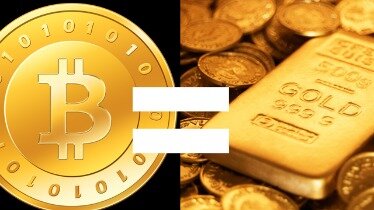
It is a kind of deposit submitted by validators that will get forfeited according to the protocol in case of any fraud or malpractices. This is a major improvement that is done in Ethereum 2.0 as it will prevent malpractices. Bitcoin was the very first cryptocurrency that was introduced in the crypto space.
Bitcoin Price Prediction – Here’s How It Could Hit $50K, While … – Finbold – Finance in Bold
Bitcoin Price Prediction – Here’s How It Could Hit $50K, While ….
Posted: Thu, 20 Jul 2023 20:22:57 GMT [source]
It is important to note that the staking 2.0 upgrade will be done in phases since it involves a lot of technicalities that the Ethereum developers should be able to handle with no problem. The first leg of the upgrade is known as ‘The Beacon Chain’, which was launched on December 1, 2020. The current price of ETH at the time of writing hovers around USD 2,500, meaning that USD 80,000 is already necessary to even have the possibility of the option.
How much ETH has been withdrawn since the Shanghai (Shapella) upgrade?
Despite its transition to PoS, Ethereum’s native token will continue to be referred to as ether, or ETH. No one can be entirely sure what might happen in the post-Merge, post-FTX crypto landscape. One potential unintended consequence might come in the form of crypto regulation. A case filed by the US Securities and Exchange Commission (SEC) against crypto investment trader Ian Balina hinted that the SEC could well consider the coin to fall under its remit. This terminology, they believe, better reflected their goals for the platform. Ethereum ETH prices eventually received a positive boost hours after the Shanghai (Shapella) upgrade.

The reason for this misconception is that at one point “The Merge” was going to include sharding but this has been separated into its own upgrade. People who stake their ETH to provide security to the network receive all the block rewards and transaction fees generated by the network (excluding all fees burned by the network due to EIP-1559). It is shared equally among the pool of stakers – it doesn’t matter if you were in a chosen group of participants, you still get rewards. Proof-of-stake is faster and more eco-friendly than proof-of-work, as it consumes far less power. This is because PoS isn’t a competition to see which miner can reach the solution to the block hash first, which is what required so much energy.
How Will Staking 2.0 Affect Other Projects Built on Ethereum?
As a result, the price went up to $1,661.33 on 4 November 2022 before settling back down to $1,604.48 on 7 November. The news came after reports SEC chairman Gary Gensler said the change to proof-of-stake made it more likely that ETH would be considered to be a security by the SEC. It hovered around this point for the next few weeks before a market upturn saw it worth about $1,325 as of the time of writing on 9 January 2023.
A major anticipated feature of this upgrade is that withdrawals of ETH stakers/validators from the Beacon Chain will be enabled. The Ethereum network Shanghai upgrade is expected to be in March 2023. Those who have staked their ETH cannot stop staking until the Shanghai hard fork, which is expected in the second half of 2023.
Ethereum’s 2.0 upgrades promised to create positive results and appear to be succeeding so far. Decreasing Ethereum’s energy consumption by 99.95% is a significant step toward ensuring cryptocurrency’s place in an environmentally conscious future. The merge switches the Ethereum network from an energy-intensive proof-of-work consensus mechanism to proof of stake. Currently, the Ethereum network can only process around 12 to 25 tps with an average confirmation time of 6 minutes. The result is that the Ethereum network is heavily congested with people all vying to process transactions, resulting in high gas fees.
How Did Ethereum 2.0 Change Things?
These options usually walk you through creating a set of validator credentials, uploading your signing keys to them, and depositing your 32 ETH. It provides full participation rewards, improves https://bitcoin-mining.biz/is-your-browser-secretly-mining-cryptocurrencies/ the decentralization of the network, and never requires trusting anyone else with your funds. You’ll need 32 ETH to activate your own validator, but it is possible to stake less.
The staked ETH is stored in a smart contract that acts as a bridge between the Ethereum 1.0 and 2.0 networks. If you want to help protect the Ethereum 2.0 network and receive https://cryptonews.wiki/white-label-banking-a-guide-for-lenders-financial/ some benefits simultaneously, you may do so by staking. You may help validate transactions and create new blocks by securing your Ethereum tokens in a smart contract.
Why Can There Only Be 21 Million Bitcoins?
Remember that your decision to trade or invest should depend on your risk tolerance, expertise in the market, portfolio size and investment goals. DigitalCoinPrice held a more positive view in its long-term ethereum 2.0 price prediction for 2030, expecting ETH to reach $13,583.68. We should also point out that the possibility remains that, without proof-of-work, Ethereum could end up being seen as just another proof-of-stake blockchain. Despite the news that https://crypto-trading.info/how-to-start-a-cryptocurrency-turnkey-brokerage-business/ investment firm Fidelity was to offer its customers the chance to trade ETH, the price continued to drop and, by 21 October 2022, the coin was worth about $1,280. A report by Swiss crypto-financial service provider Bitcoin Suisse said that staking would reduce the circulating supply of ETH. Prior to The Merge, by 29 August 2022 almost 13.7 million ETH had been staked on the Beacon Chain, thereby removing more than 11% of the coin’s total circulating supply.
These include proof-of-stake solutions (Beacon Chain, Casper), Sharding solutions, and more. Ethereum entered the crypto space in June 2015 and was deployed by founder Vitalik Buterin, Charles Hoskinson, and Gavin Wood. Though these individuals except Vitalik have migrated to working on their own blockchain projects, they have significantly contributed to the Ethereum Blockchain and the development of the network. With the event of ether (ETH) launching above the USD 4000 threshold in May 2021, one couldn’t help but wonder whether decentralized applications are nearing mainstream adoption. A huge event in the cryptocurrency world is on the horizon, after months of delays and revised timelines.
Why do I need to have funds at stake?More
This is on par with the 16% loss faced by the world’s leading cryptocurrency, Bitcoin (BTC). ETH2 will only be available for trading or transfer until Phase 3 when the upgrade of the Ethereum protocol is complete. Transactions or other features we have now on ETH won’t be available on ETH2 for probably years. There are rumors of a possible secondary market where to trade them though. The “splurge” would be several smaller upgrades and fine-tuning in order to ensure that the network operates smoothly.
- Ethereum is the blockchain many smart-contract-based decentralized applications (dApps) are housed on, and these have applications in finance, real estate, supply chains, and governance, among many others.
- This new system also comes with a new set of incentives to participate in the cryptocurrency.
- When a new block is added successfully, users who staked their funds are rewarded with more tokens.
Apart from Ethereum you can read about who control price of bitcoin here. That is expected to happen sometime in 2022, although it is not currently known when. A big initiative of Ethereum 2.0 is to make the network more scalable so it can handle all of the activity on the network.
Ethereum is an older version, whereas Ethereum 2.0 is an upgraded system that is introduced with new ways of operations. Ethereum 2.0 is aimed at improving the speed, and efficiency, and a number of transactions. The main difference between the older and new versions of Ethereum is the mechanism on which it is based or used. Ethereum uses a proof of work consensus mechanism, whereas Ethereum 2.0 uses a consensus mechanism of Proof of stake. One of the most important changes for Ethereum is its decreased energy use. And this is an area where cryptocurrencies have been (rightly) lambasted, since proof-of-work protocols, still used by Bitcoin, consume utterly huge amounts of energy.
- As compared to Ethereum, or the older version, Ethereum 2.0 has elementary changes in its blueprint and structure.
- So far, Vitalik Buterin and the Ethereum Foundation have expressed that they are firmly against any forked ETH tokens.
- Unlike blocks in the blockchain, the validators are mixed up to prevent alteration or manipulation of data.
- With the release of Ethereum 2.0, staking has the potential to lessen the price fluctuations of ETH.
If you want to validate the network, help it out and get a decent reward while doing so, that could be your reason for staking. Ethereum uses the Proof of Work consensus method; the miners have to put their efforts and energy into solving the highly complex mathematical algorithms. Miners use computing power to solve mathematical puzzles and to verify the Ether transactions. The miners compete, and the miner who solves the algorithms first gets the Ether reward.
Although there are ways to stake Ether on exchanges, which would make them more liquid, doing so does not directly support the network or decentralization in general. If you’re confident that Ethereum 2.0 will be a successful project, then you should be confident that running a validator node will be beneficial. To some who don’t have 32 ETH to just lock up on the fly or like to use ETH for other decentralized applications, they would be hesitant to choose this option. You have to do this until the Ethereum 2.0 protocol rolls around, which may not take place until years from now. For those who have limited ETH or use them regularly, staking Ethereum for Ethereum 2.0 won’t be a viable option.
